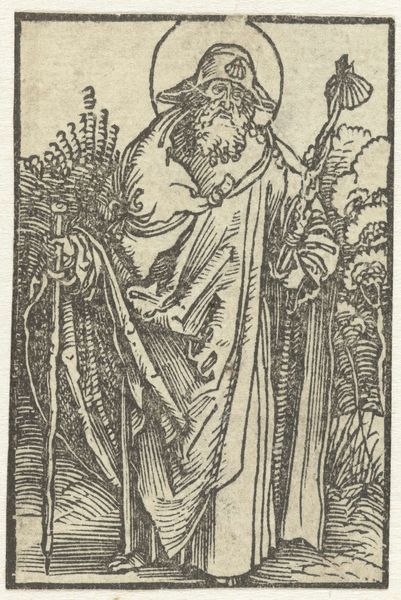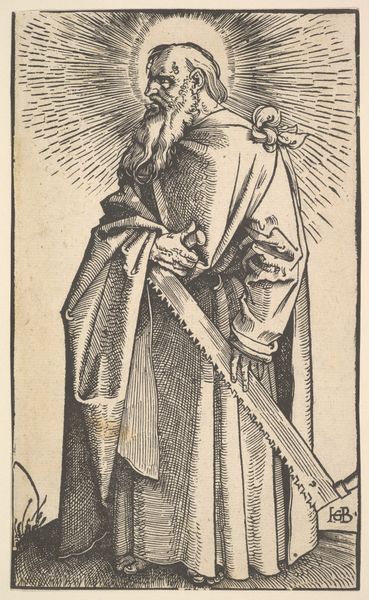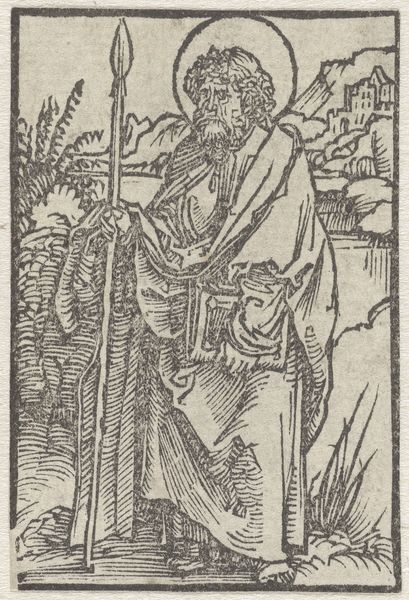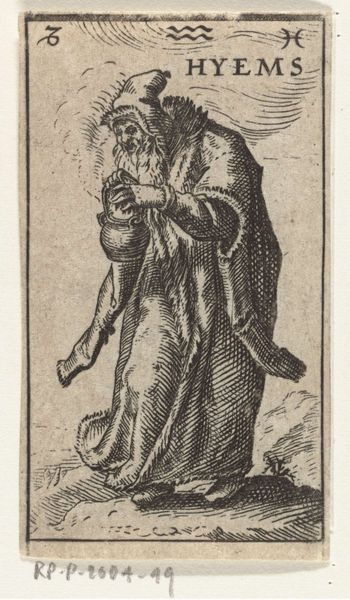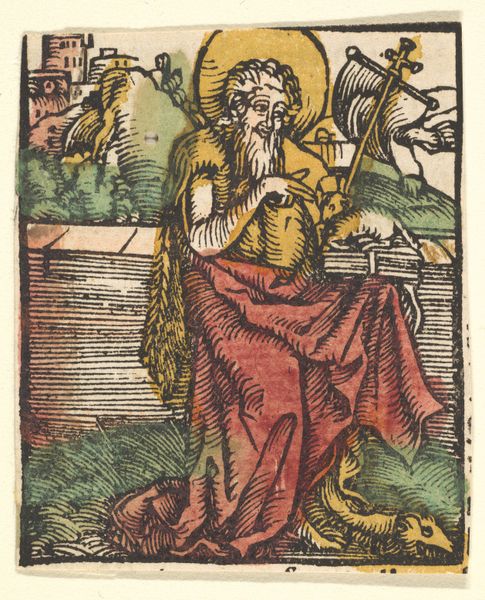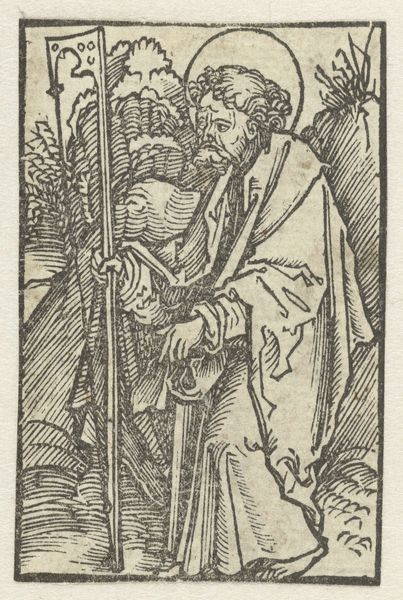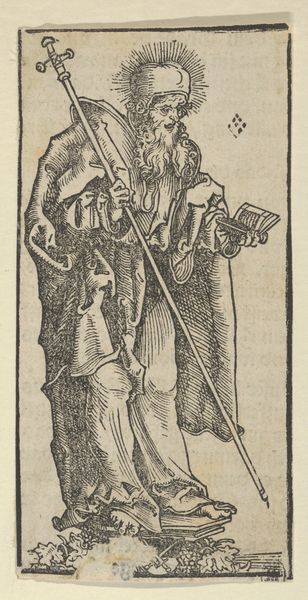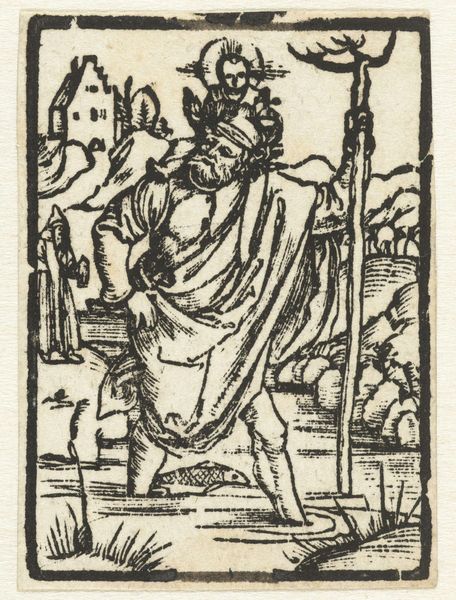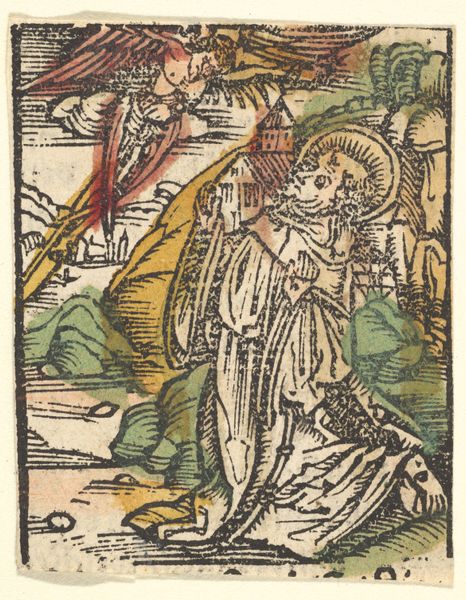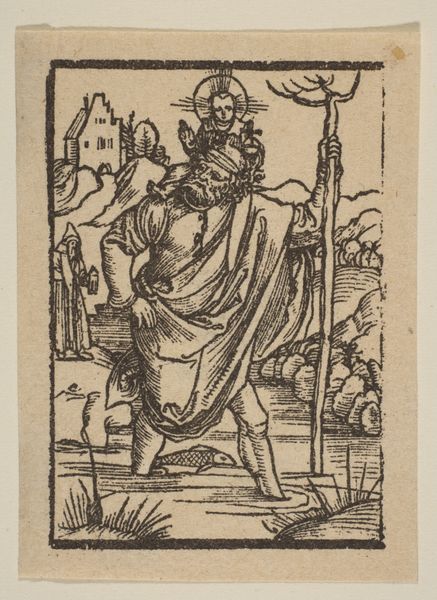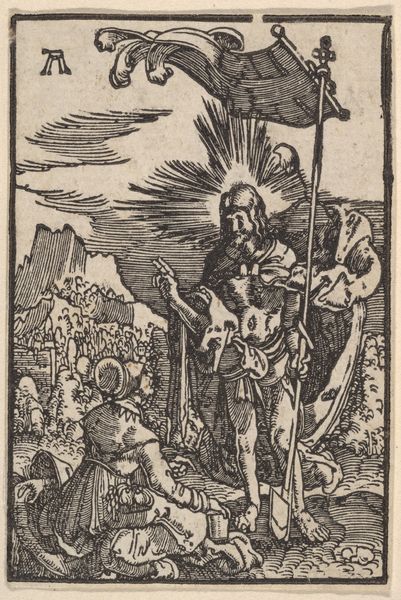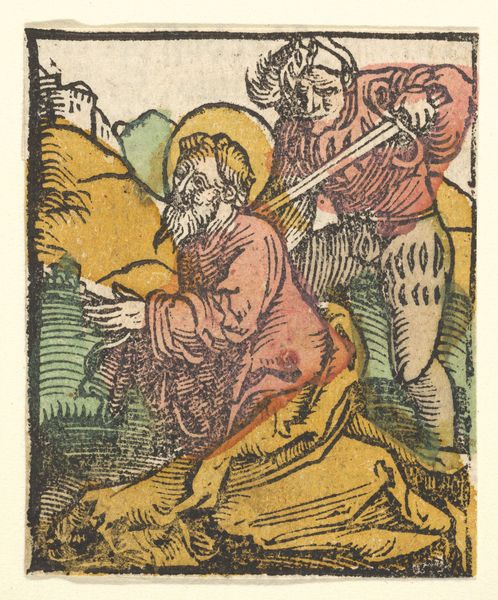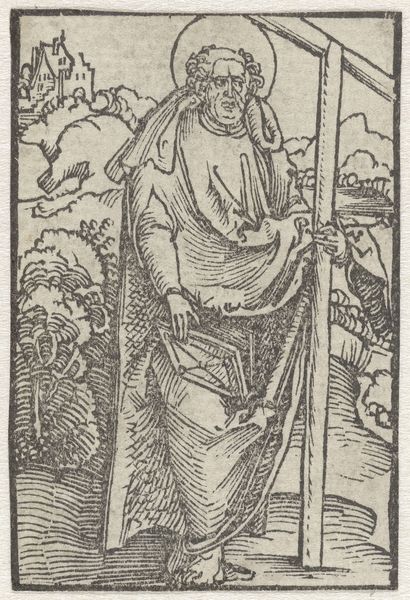
print, woodcut
# print
#
landscape
#
figuration
#
woodcut
#
northern-renaissance
Copyright: National Gallery of Art: CC0 1.0
Curator: Looking at this print, its tight composition, dominated by black lines, imparts a feeling of starkness, wouldn't you say? Editor: Indeed. What strikes me initially is how Beham, circa 1527, captures vulnerability—both in the figure and in the lamb he carries. This resonates particularly with contemporary discussions around care, labor, and precarity within marginalized communities. Curator: Beham's use of woodcut gives it that striking texture and strong contrast. Observe the dense, parallel hatching creating the drapery. The directional changes subtly imply form. Editor: The halo emanating rays behind the shepherd and the lamb—symbols of divinity and purity—also serve to elevate and sanctify a figure often associated with meekness. It reframes labor and compassion as revolutionary acts. It seems the artist also challenges the status quo by presenting Christ in this rural, everyday scenario, as though emphasizing the commonality that the New Testament brought to society in its day. Curator: Agreed. The landscape plays a significant role; it serves to enhance the verticality of the figure, who strides purposefully over a simple landscape with a clearly defined, slightly elevated, horizon line. Editor: Yes, and the crucifix planted atop one of the hillocks lends an almost mournful dimension. This piece makes a profound claim—Christian virtue isn't only attainable through monumental actions; it resides in humble caring gestures for the least of us, including care of self, something frequently denied in capitalist culture. Curator: Note that by reducing tonal gradations, Beham achieves a high level of representational economy, all the forms remain clearly legible without shading or color. It makes it almost graphic in a modern sense, yet rooted in its time through biblical narrative. Editor: Considering how faith-based institutions have historically participated in oppressive practices, I believe “The Good Shepherd” poses a direct yet quiet call to account for those structures. I wonder about Beham's other political or personal relationships within this social fabric when creating this particular print. Curator: His handling of line is superb; you can sense form via those economical incisions. Editor: Reflecting on the symbolic density and technical refinement of this Northern Renaissance print, it is evident why "The Good Shepherd" is more than a biblical representation; it mirrors societal obligations that resound throughout centuries, especially the neglected and those who take up acts of care in modern day.
Comments
No comments
Be the first to comment and join the conversation on the ultimate creative platform.
